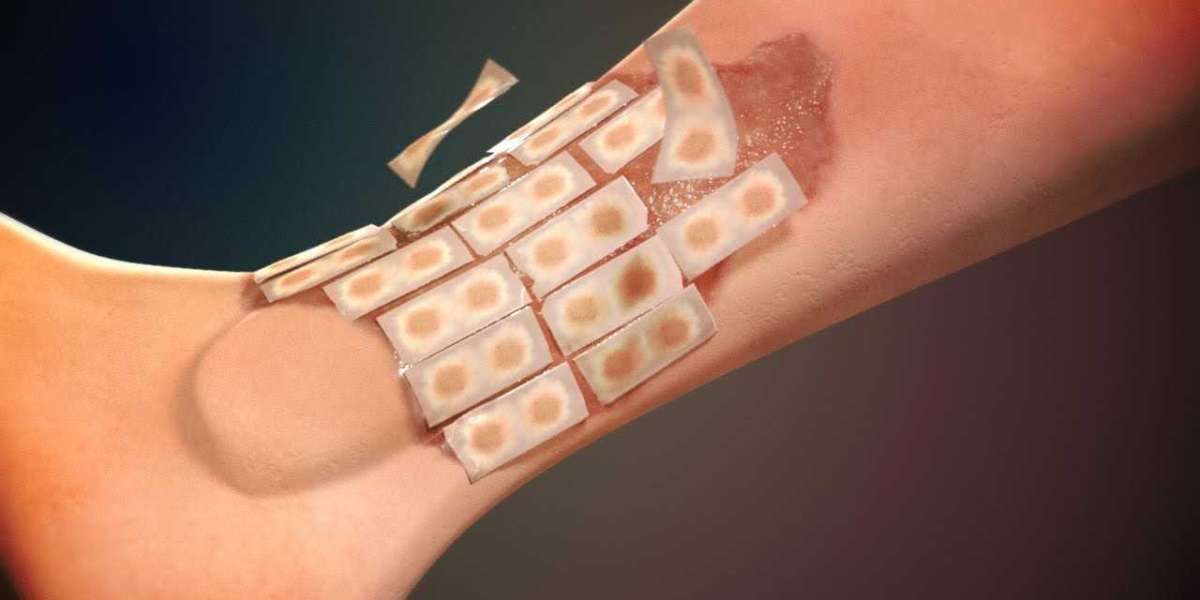Chronic wounds are a significant healthcare challenge, affecting millions of patients worldwide. These wounds, which include pressure ulcers, diabetic foot ulcers, and venous leg ulcers, often resist traditional treatments, leading to prolonged healing times, infections, and reduced quality of life. For healthcare providers, managing chronic wounds can be complex, requiring innovative solutions that go beyond standard wound care practices.
This is where skin substitutes come into play. Designed to mimic the structure and function of natural skin, skin substitutes offer a promising alternative to traditional wound care. They provide essential biological components that promote healing, reduce inflammation, and protect the wound from infection. As a result, skin substitutes have transformed chronic wound management, offering hope for faster healing and better outcomes for patients.
In this article, we'll explore the benefits of skin substitutes, how they work, and why they are becoming a critical tool in the management of chronic wounds.
What Are Skin Substitutes?
Skin substitutes are advanced wound care products that function as temporary or permanent coverings for wounds. They are designed to replicate the properties of natural skin and provide a supportive environment for healing. These substitutes are typically composed of biological materials, such as collagen or living cells, and may include synthetic or semi-synthetic components.
Skin substitutes are used in cases where the body's natural healing processes are insufficient, particularly in patients with chronic wounds that do not respond well to conventional treatments like dressings or ointments. By providing a scaffold for new tissue growth, skin substitutes help to close wounds, stimulate tissue regeneration, and reduce the risk of complications such as infection or excessive scarring.
Types of Skin Substitutes
There are several types of skin substitutes, each with its unique composition and application. They can generally be categorized into three main types:
- Biological Skin Substitutes
These are derived from human or animal tissues, such as the dermis or amniotic membrane. They contain living cells and growth factors that help promote tissue regeneration and healing. Human cadaveric skin and porcine (pig) skin are common examples. Biological skin substitutes are often used in cases where the body's healing mechanisms need extra support, such as in burn patients or individuals with severe chronic wounds. - Synthetic Skin Substitutes
Synthetic skin substitutes are made from materials like silicone or polyurethane. They are designed to provide a protective barrier over the wound and facilitate moisture retention, which is crucial for healing. While they may not contain living cells, synthetic skin substitutes are highly effective in creating an environment conducive to healing. They are often used for superficial wounds or as temporary coverings before other treatments are applied. - Biosynthetic Skin Substitutes
These substitutes combine elements of both biological and synthetic materials. They may include collagen, growth factors, and other proteins alongside synthetic scaffolds. This combination allows for greater flexibility in treating different types of wounds, as biosynthetic skin substitutes can mimic the structure of natural skin while also offering enhanced durability.
The Role of Skin Substitutes in Chronic Wound Management
Managing chronic wounds requires a multifaceted approach, as these wounds tend to persist despite treatment. Traditional methods, such as wound dressings, debridement, and topical therapies, often fall short in promoting complete healing. This is where skin substitutes have shown significant promise. By addressing the underlying issues that hinder the healing process, they offer a more targeted and effective solution for chronic wound care.
1. Promoting Faster Healing
One of the most significant advantages of skin substitutes in chronic wound management is their ability to promote faster healing. Chronic wounds often stall in the inflammatory phase of healing, which prevents new tissue formation. Skin substitutes, particularly those derived from biological materials, provide essential proteins, growth factors, and cellular components that stimulate tissue regeneration. By mimicking the structure of natural skin, these substitutes encourage the body to accelerate the production of new tissue, helping the wound close more quickly.
In diabetic foot ulcers, for example, where healing can be particularly slow, the application of a biological skin substitute has been shown to reduce healing times and prevent further complications such as amputation.
2. Reducing Infection Risks
Chronic wounds are highly susceptible to infections, which can lead to severe complications and prolonged healing. Skin substitutes act as a protective barrier, shielding the wound from harmful bacteria and contaminants. Some skin substitutes, especially those with antimicrobial properties, can actively reduce the bacterial load in the wound, preventing infections before they take hold.
By covering the wound with a skin substitute, the chances of secondary infections are minimized, allowing the body to focus on healing rather than combating infections. This is especially important in patients with compromised immune systems or those prone to recurrent infections, such as elderly individuals or people with diabetes.
3. Maintaining Moisture Balance
A key factor in wound healing is maintaining the right moisture balance in the wound bed. Too much moisture can lead to maceration (softening and breakdown of the surrounding skin), while too little moisture can cause the wound to dry out and form a scab, impeding healing. Skin substitutes help regulate moisture by providing an optimal environment for tissue regeneration.
By keeping the wound bed moist but not overly saturated, skin substitutes create conditions that are ideal for cellular activity, collagen formation, and tissue growth. This balance is critical in managing chronic wounds, where maintaining consistent moisture levels can be challenging.
4. Minimizing Scarring and Improving Cosmetic Outcomes
Chronic wounds, especially those that take months or even years to heal, often leave behind significant scarring, which can affect both function and appearance. Skin substitutes help minimize scarring by promoting more natural healing processes. They provide a framework for the skin to regenerate in a way that mimics the original tissue structure, resulting in less fibrous tissue and more aesthetically pleasing outcomes.
This is particularly beneficial in cases where chronic wounds occur on visible areas of the body, such as the legs or arms. Patients who are concerned about the long-term appearance of their skin can greatly benefit from skin substitutes that help reduce scarring.
Applications of Skin Substitutes in Chronic Wound Care
Skin substitutes are used in a variety of chronic wound conditions, with applications across multiple areas of healthcare. Some common uses include:
- Diabetic Foot Ulcers: Patients with diabetes often struggle with chronic ulcers on their feet, which can lead to infections and even amputations. Skin substitutes have proven effective in closing these wounds faster and reducing the risk of complications.
- Pressure Ulcers (Bedsores): Individuals who are bedridden or immobile are at risk of developing pressure ulcers. Skin substitutes provide an extra layer of protection and promote healing in these difficult-to-treat wounds.
- Venous Leg Ulcers: These ulcers, caused by poor blood circulation in the legs, are slow to heal. Skin substitutes can help improve tissue regeneration and reduce healing time.
- Burns and Trauma Wounds: While not always considered chronic wounds, severe burns and trauma injuries can benefit from skin substitutes, which help close wounds faster and reduce the risk of scarring.
The Future of Skin Substitutes in Wound Care
As research into skin substitutes continues, their role in chronic wound management is expected to expand. Advances in biotechnology are leading to the development of more sophisticated substitutes that can deliver targeted growth factors, stem cells, and other bioactive compounds directly to the wound bed. This could further enhance healing and reduce complications.
Additionally, skin substitutes may become more personalized in the future, with the ability to tailor treatments based on individual patient needs and wound characteristics. This personalized approach would ensure that every patient receives the most effective treatment possible.
Conclusion
Skin substitutes are transforming the landscape of chronic wound management by offering faster healing, reducing the risk of infections, and improving cosmetic outcomes. As technology advances, these substitutes will continue to play a critical role in helping patients with chronic wounds heal more effectively and regain their quality of life. By addressing the unique challenges of chronic wounds, skin substitutes are paving the way for a new era in wound care, one where patients can expect better outcomes and fewer complications.







